An overwhelming majority of kitchen knives are made from stainless steel, high carbon steel, and their variations. One building material for kitchen knife blades that gained traction in popularity, especially in recent years, is ceramic.
While ceramic is thought to be an extremely fragile material for knives at first, there are certain things that make them favorable for certain cooks.
In this article, we will compare the features of ceramic knives with steel knives. Read through the rest to find which one is more suited for you as we cover every aspect, including their sharpness, durability, maintenance, ease to use, and more.
Table of contents
How are ceramic knives made?
Ceramic might sound like an unusual material for knives at first, so what is a ceramic knife, and how is it made? Ceramic knives are typically made from zirconium dioxide, in the shape of a white powder at first, pressed under 30 tons of pressure, following intense high temperatures to maintain a blade shape.
The outcome of this process is one of the most rigid materials and the hardest in knives. On the Mohs scale to measure mineral hardness, ceramic scores 8.5 compared to 4.5 for regular steel and 7.5 for hardened steel. Basically, this means ceramic is a lot harder than steel but too brittle to break under lateral pressure that steel knives take like a champ.
Advantages of ceramic knives
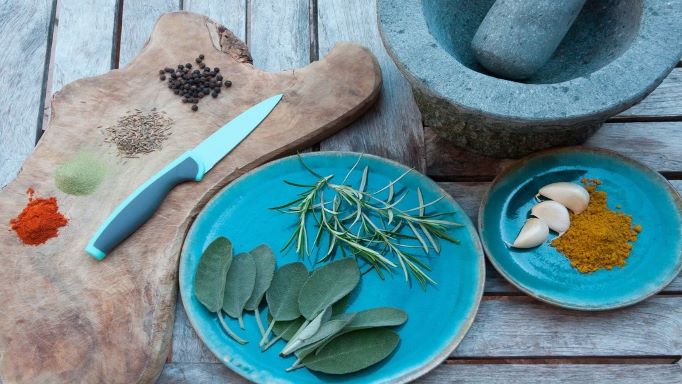
- Holds its edge significantly longer than other blades.
- Blade is generally very thin, allowing easy delicate cuts.
- Won’t rust or oxidate.
- Doesn’t transfer ions that can oxidate certain foods like fruits and vegetables.
- Light and easy to work with.
The most noteworthy advantage of a ceramic knife is that it will hold its edge significantly longer. A ceramic knife’s sharpness is likely to last ten times longer than its counterparts, even compared to high-carbon steel. Therefore, ceramic knives won’t need sharpening as often.
The ceramic blade is also interesting in more inclusive ways. They are thin, and due to the nature of the chemicals, they won’t transfer ions from the surface like metals do, which prevents the oxidation of certain foods. This feature of ceramic blades makes it a great tool to cut up fruits and vegetables.
The blades also won’t oxidize or rust. They are naturally permeable to outside influences like air, moisture, and even acid. This perk about ceramic knives gets in the way of bacterial growth, making cleaning a lot easier. Additionally, ceramic knives are light and easy to work with, even for beginners.
Disadvantages of ceramic knives
- Prone to chip or break
- Can’t work with hard ingredients like meat with bones or frozen foods, not an all-purpose knife
- Very fragile blade profile that can break completely if dropped, flexed, or twisted
- Sharpening is a nightmare and won’t work with regular sharpening tools
While ceramic knives have a lot of positives, there are downsides to them. The most notable setback is that they’re not for all purposes. It’s not a good idea to cut through hard ingredients like meat with bones or frozen foods as they are brittle and prone to chip.
The hard foods aren’t the only thing that may cause the blade to chip. If twisted or flexed enough, the blade can chips or even shatter entirely. Some ceramic knives come with a cover to protect it from outside forces that can cause the blade to break, such as other utensils in the drawer. Overall, they are a lot more fragile than other kitchen knives.
The sharp edge of a ceramic knife will last longer without a doubt, but once it becomes dull, you will have a hard time sharpening. They require a diamond sharpener and take much effort to sharpen, unlike a steel blade. It’s recommended a professional should do the sharpening after the blade is blunt. But if you’re up for the challenge, read our article on how to sharpen a ceramic knife.
About steel knives
Steel is one of the oldest materials used in blades and the most popular in today’s kitchen knives. From western chef’s knives to Japanese, steel is the principal blade material. Regardless of where you go shopping for a knife, most blades will be made from steel.
When talking about steel knives, there isn’t a single one, though. There are different varieties of steel used in kitchen knives. Some knives come with a combination of these coated on the blade and are much more versatile than ceramic knives.
Advantages of steel knives
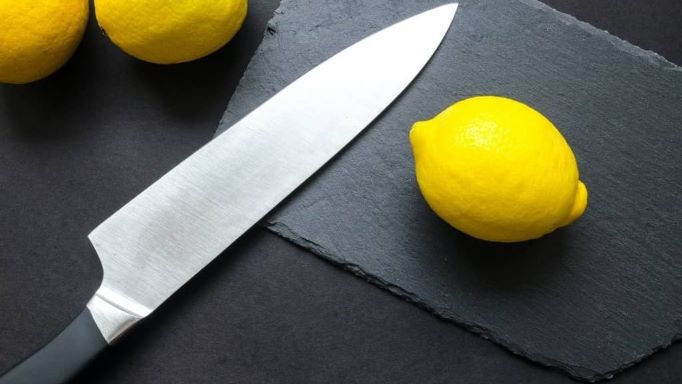
- Proven to be one of the best, if not the best, materials for knife-making.
- Certain amount of chromium makes it stainless.
- Holds edge exceptionally well and is easy to sharpen.
- Extremely versatile, an all purpose material for kitchen knives.
By nature, steel is a sturdy material that can have added attributes. For example, adding chromium oxide gives you stainless steel that’s rust resistant; while higher carbon content makes the steel harder, but prone to rust.
The problems of oxidation and rust forming on the blade are pretty nonexistent in stainless steel. Although looking after your knife and leaving it dry after every use is recommended, these worries are not as prominent.
One steel kind, the high carbon stainless steel, holds its edge exceptionally well, but not as much as ceramic blades. They get sharpened up much faster than any other steel while maintaining their edge for longer.
Though specialized knives serve a specific purpose, most steel knives can also be used for all purposes. Isn’t that the whole point of a chef’s knife?
Handpicked for you
True cutting power in the palm of your hand
Disadvantages of steel knives
- Other than stainless steel, it’s prone to rust and oxidate if not properly cared
- Generally a thicker blade profile, but this is more prevalent in western knives. The Japanese knives and the ones in our store are incredibly thin.
- Heavier blade, making it tiring when working for prolonged periods
The oxidation and rusting is the most worrying aspect of owning a steel knife. You surely can’t leave it in the sink after use. A steel knife will require more time for care, but stainless steel can help with these concerns.
Another downside of owning a steel knife is that the blade is often not as thin as ceramic knives when compared. If you need to make delicate cuts and thin slices, you will want to look for different variations. Furthermore, steel knives are generally heavier. Though you can overcome the heaviness by switching to a lighter handle, the weight of the blade is still going to be there.
However, the downsides of having a steel knife can have simple fixes. Don’t have enough time or don’t want to spend effort caring for the knife? Get a stainless steel knife. Is the blade too thick? Consider a Japanese knife.
Some of the setbacks that come with a steel knife can be fixed easily by experimenting with different varieties, as plenty are available. Take a look at our handmade kitchen knives to find the one that suits you the most.
Ceramic knife vs steel knife
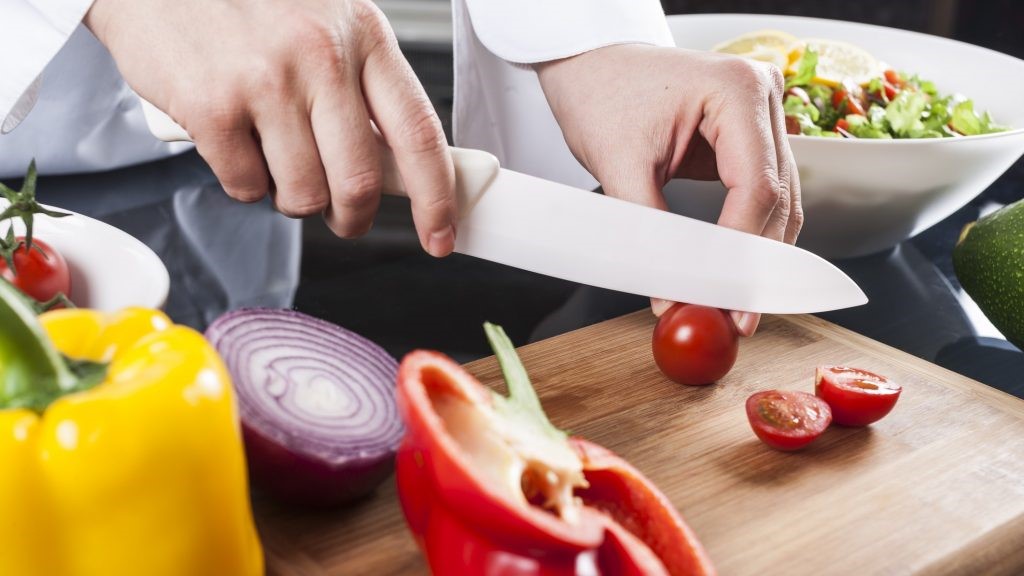
Here is the ultimate comparison between ceramic and steel knives, covering every feature you can imagine.
Edge retention comparison
The edge retention refers to the knife’s ability to hold its sharp edge. For a knife to remain sharp for prolonged periods – or any other material for that matter – they need to be hard. As mentioned, ceramic scores a higher average for hardness than steel. Therefore, ceramic is harder than steel and won’t go blunt as quickly as its steel counterpart.
This doesn’t mean that steel can’t be as sharp. After every two to three uses, utilizing a honing rod can maintain an extremely sharp edge in steel knives.
Sharpening comparison
Sharpening is an interesting subject for ceramic knives. Because ceramic itself is extremely tough, using a whetstone or honing rod won’t do any good to sharpen it. You will need a specific sharpening tool to give it a better edge.
This is a vastly different scenario with steel knives. You can sharpen them quickly, and if done regularly, they will be as sharp as the first day. There are many sharpening remedies for steel knives for every budget, but using a whetstone is the most efficient way to go. Read how to use whetstones to sharpen knives.
Weight comparison
There isn’t a universally accepted weight standard for kitchen knives. Some prefer their kitchen knife to be heavier, and some lighter. It’s all a matter of personal preference, but most prefer their knives to be light to manage delicate cuts easily.
We can only say ceramic knives are much lighter than steel knives. Therefore, it’s a better choice if you’re looking for a lightweight knife. If weight doesn’t play a role in your decision-making, consider the other characteristics of these two distinct knife blades.
Durability comparison
Perhaps when buying a knife and any other product, their durability is at the center of decision-making. Though ceramic knives are very tough, they are brittle and prone to chip. Any hard food is problematic for ceramic knives. For example, butchering a whole chicken or cutting fruits with seeds like avocado or peach may result in a chipped blade.
These are some of the few things that would never happen to a steel knife. You can bend them all you want, drop them again and again, and cut through hard foods without a single worry. However, this doesn’t mean that a steel knife won’t chip ever. Neglecting certain care elements can result in chipping. The oxidation and rust can lead to this even when not used. That’s why caring for your knives and implementing the proper storing methods are a must.
Maintenance comparison
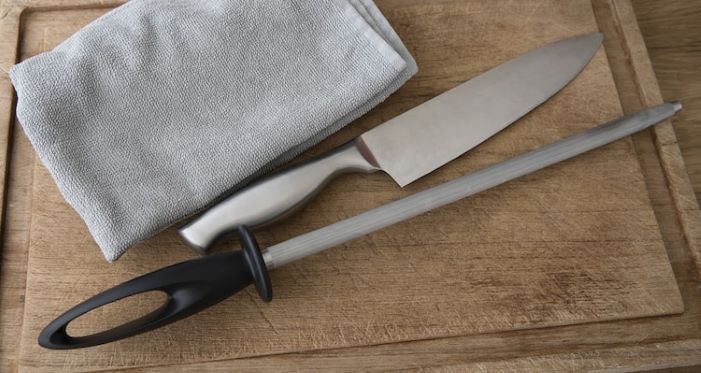
To maintain a steel knife, you need to hone and sharpen it as much as it needs. Whether it’s stainless steel or not, leaving it dry after every use is also recommended to increase the knife’s lifespan. With ceramic knives, these aren’t necessary at all.
The only maintenance needed for a ceramic knife is to make sure it’s safe from other objects to avoid damage. You can forget about leaving a ceramic knife dry or using special mineral oil to coat the blade as it won’t rust or oxidize.
As sharpening is a part of maintenance, note that you might need to send your ceramic knives to be sharpened by a professional. Though it won’t require sharpening as quickly as a steel knife, it’s still worth considering.
Price comparison
You can get a decent stainless steel knife that will last you many years for about $50 to $75. At the same price, you’ll be able to get a high-quality ceramic knife that can also last a very long time. However, replacing your entire set of kitchen knives with ceramic can be costly and not recommended.
Though you can replace ceramic knives individually for about $20 per knife, steel knives provide more value for the buck with enough care in the long run.
Variety comparison
Both ceramic and steel knives have different varieties available. You can have them in various lengths, thicknesses, handles, design elements, and so on. There is no shortage of the types, but ceramic lacks behind if you want to open yourself to a whole world of knives.
You can look at a country’s cuisine and likely come across different knives that serve a designed purpose. For example, the Japanese have santoku, gyuto, sujihiki, and other knives made from various steel. Ceramic knives can have the same shape and look but won’t serve the purpose right as they’re not an all-rounder material for knives.
Do I need a ceramic knife?
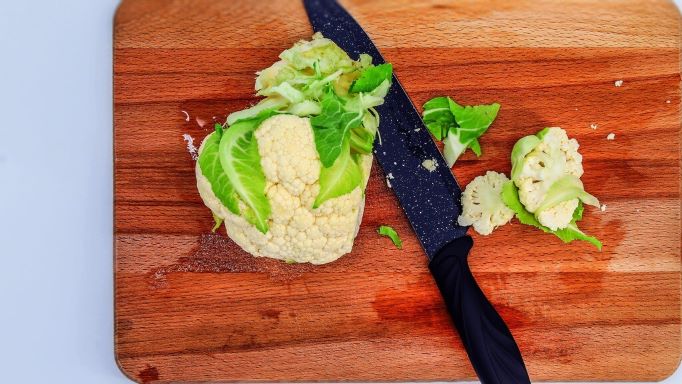
Ceramic knives aren’t a must in everyone’s kitchen, but it can be nice to have one ready at your service. Utilizing ceramic knives to cut up boneless meat, fruits, and vegetables can help extend the life of other knives in your kitchen.
If the primary kitchen knife you’re using is non-stainless steel like a high-carbon steel knife, we highly recommend having a ceramic knife or another type of stainless knife alongside your primary.
Having a ceramic knife will help you save time and effort as you’re not required to clean and care as much as a steel knife – just a quick rinse and back in its place. For example, using a carbon steel knife to cut a few pieces of fruit when craving a late-night snack will require more cleaning. With a ceramic knife, you’ll be done just by wiping the blade.
The bottom line is although it isn’t necessary to have both, a ceramic knife that you can use anytime will undoubtedly help a lot.
Things to consider when buying a ceramic knife
Ceramic knives come in all kinds of shapes and sizes. They are usually 6 to 9 inches long and sold in sets. Before you buy a complete set of ceramic knives, we recommend ordering a single piece first to see if you like it or not.
Understanding the length of the blade you’re comfortable using and ordering accordingly can help you have a smooth transaction from steel to a ceramic knife. The same as others, ceramic knives have different designs. Although you won’t find as much variety in ceramic blades, there are a good number of options for most home cooks.
As sharpening is a major problem with ceramic knives, some companies like Kyocera – the first company to ever produce a ceramic knife – offer free sharpening for their products. As long as you pay for the shipping of the knives, you can get them sharpened for free in safe hands. See if the company manufacturing the knives offers such a deal as it would save you from plenty of trouble.
Things to consider when buying a steel knife
When shopping for a brand new steel knife, first consider the knife design and the steel you prefer. For example, carbon steel has a much better performance in holding its edge but can rust. If you’re not up for the challenge of caring for a knife, it obviously won’t be the right choice.
Opt-out for a carbon stainless steel knife if you want the extra hardness and durability. The additional cost is definitely worth it. The type of knife you’re looking for is also important. Are you looking for a knife to be used for a specific purpose or something that can be used for everything? If you’re in the market for an all-rounder knife that can handle most of the tasks, go with a chef’s knife. In a previous article, we’ve broken down everything you need to consider when buying a chef’s knife. Go ahead and read it!
Conclusion – are ceramic knives better than steel?
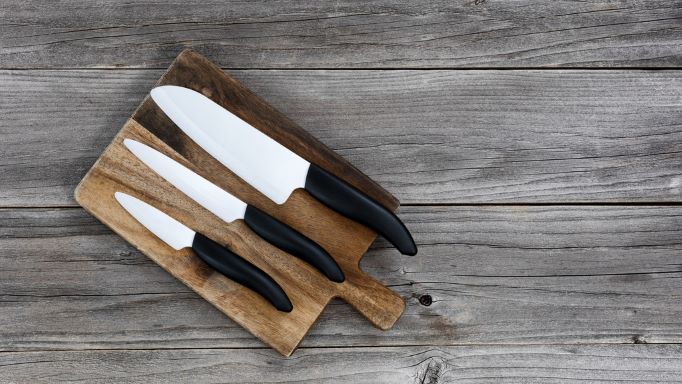
In some ways, yes, but at the same time, no. There aren’t any rules for what makes a knife good in the kitchen. It boils down to the preferences of the person using them, not that either one is superior.
Suppose you only use a knife to cut fruits and vegetables, cube down chicken breasts, or other softer ingredients. In that case, a ceramic knife will be more suitable for you. If you’re looking for a kitchen knife that can be used for all tasks, a steel knife will be the better option.
Now that you know every difference between ceramic and steel knives, you can have a rough idea of whether or not to get one. A ceramic knife will help you prepare certain foods and ease the making of late-night snacks, but you still need a steel knife for all purposes and tougher foods. Visit our homepage to find the knife that will take care of your needs.












